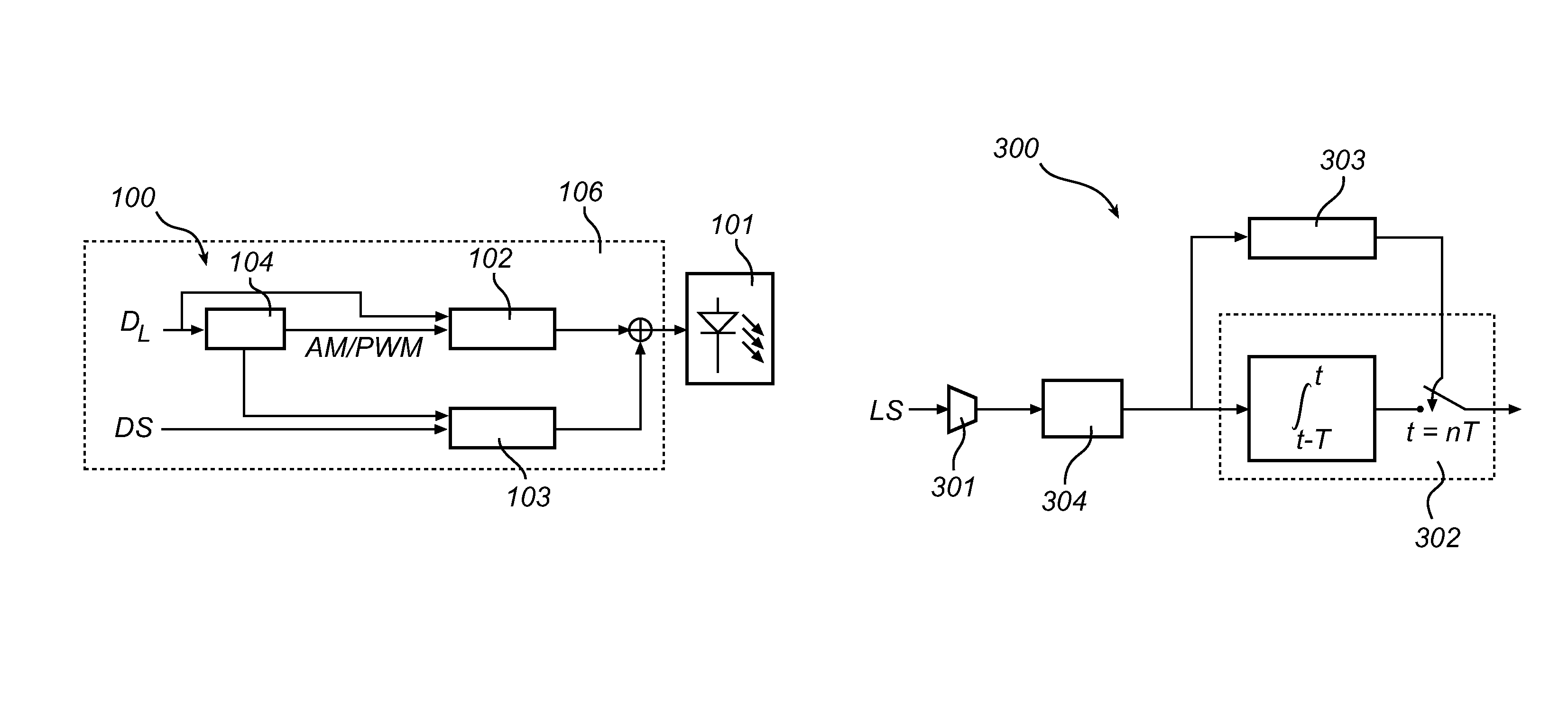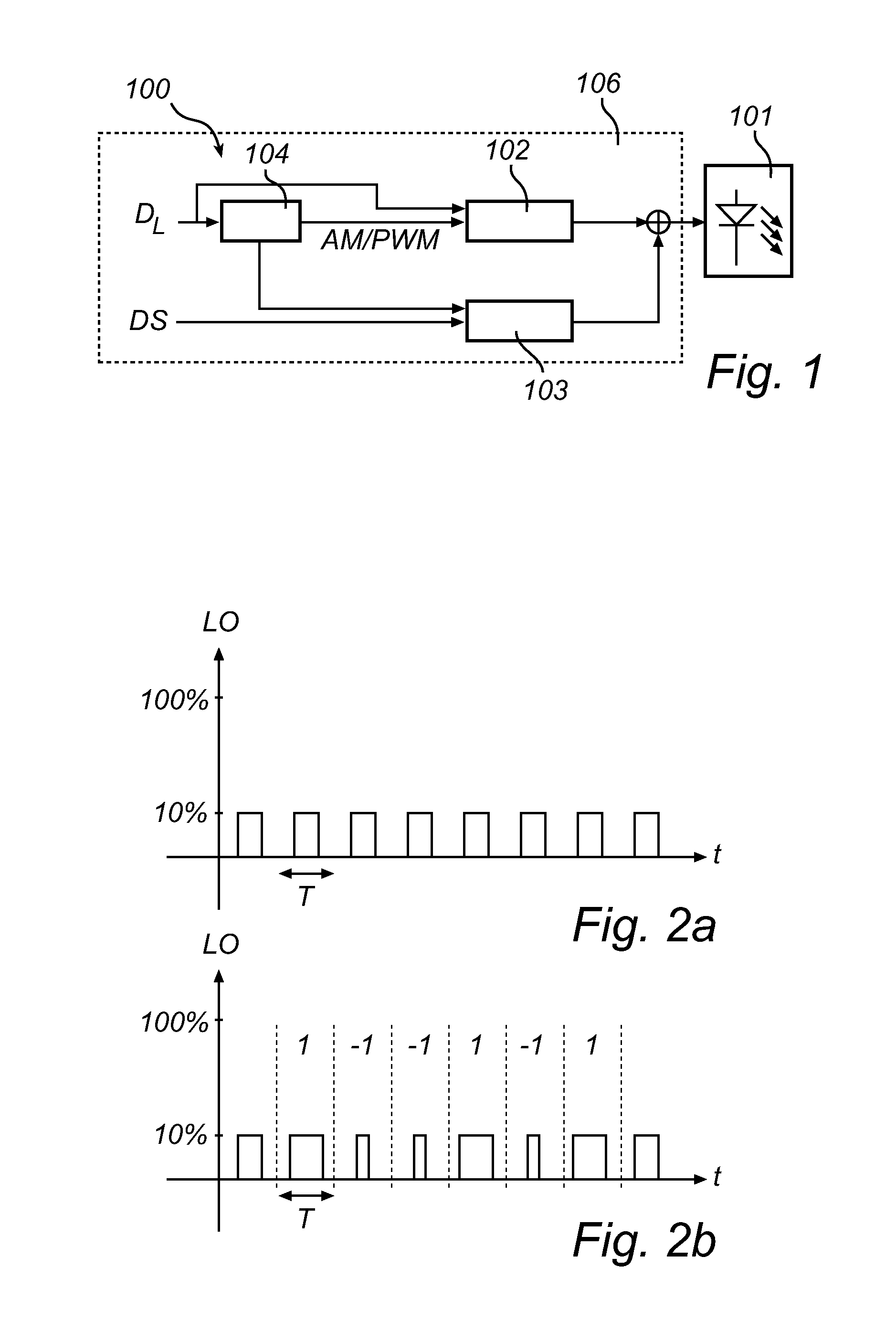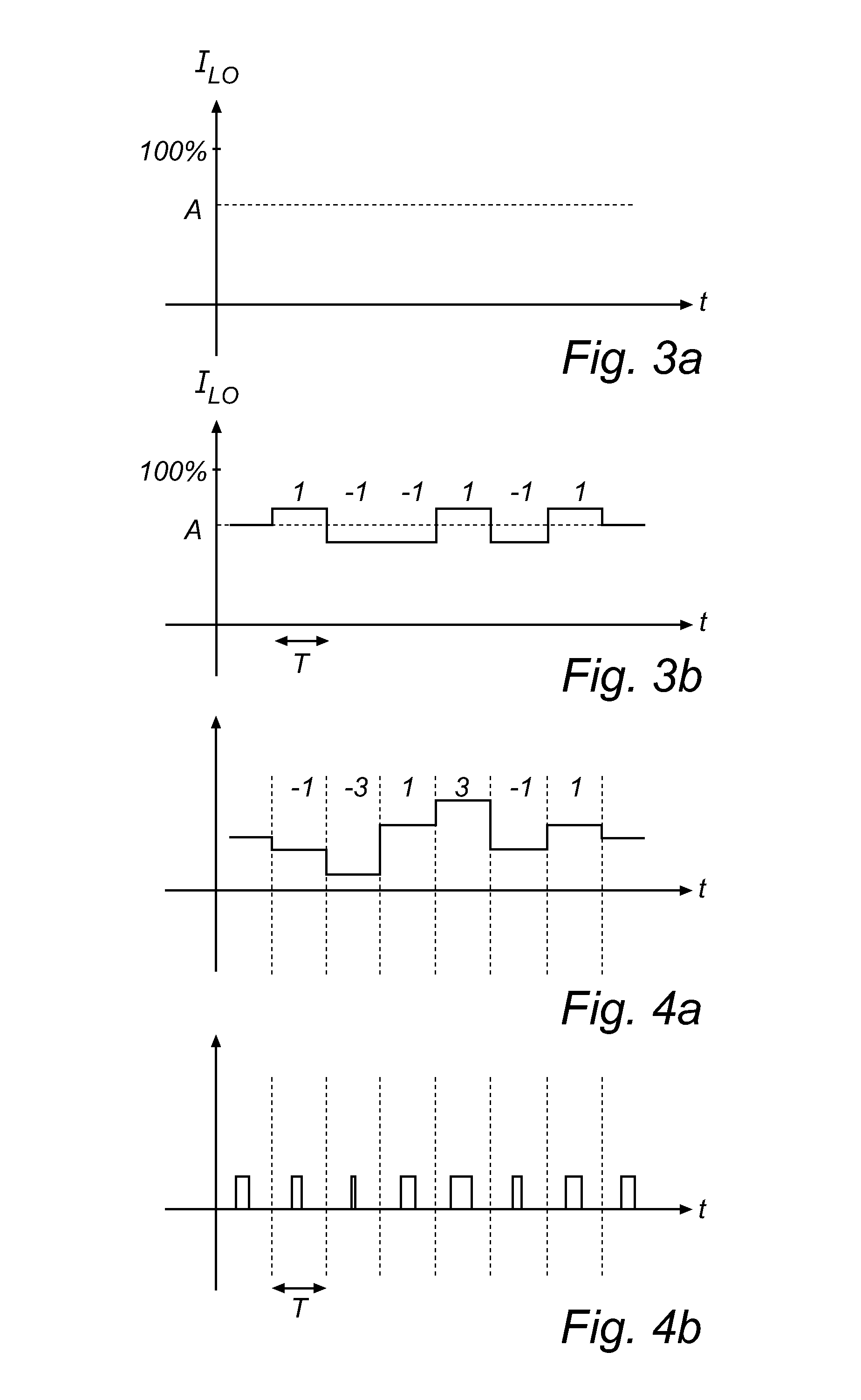Lighting device and receiver
a light source and receiver technology, applied in the direction of electromagnetic transmission, transmission, close-range type systems, etc., can solve the problems of cumbersome, if not impossible, and extraction of data modulated in ligh
- Summary
- Abstract
- Description
- Claims
- Application Information
AI Technical Summary
Benefits of technology
Problems solved by technology
Method used
Image
Examples
Embodiment Construction
[0036]The present inventive concept is based on providing a code modulation method, herein under referred to as Compatible Amplitude Modulation, CAM, which provides a compatibility of code modulation in a dimmable lighting system. The CAM is based on in a lighting device, which may employ multiple dimming modes, each representing dimming the light output from the lighting device by means of a respective dimming method, controlling the instantaneous dimmed light output from the lighting device such that the integrated value of the dimmed light output during a time period T is modulated to embed a code. The code may then subsequently be extracted from the outputted modulated light by means of an integrate-and-dump process, without knowledge of the dimming method and / or dimming level of the lighting device.
[0037]As a way of illustration, CAM is first described for a lighting device utilizing two modes of dimming. FIG. 1, details a schematic block diagram of an embodiment of a lighting ...
PUM
 Login to View More
Login to View More Abstract
Description
Claims
Application Information
 Login to View More
Login to View More - R&D
- Intellectual Property
- Life Sciences
- Materials
- Tech Scout
- Unparalleled Data Quality
- Higher Quality Content
- 60% Fewer Hallucinations
Browse by: Latest US Patents, China's latest patents, Technical Efficacy Thesaurus, Application Domain, Technology Topic, Popular Technical Reports.
© 2025 PatSnap. All rights reserved.Legal|Privacy policy|Modern Slavery Act Transparency Statement|Sitemap|About US| Contact US: help@patsnap.com



